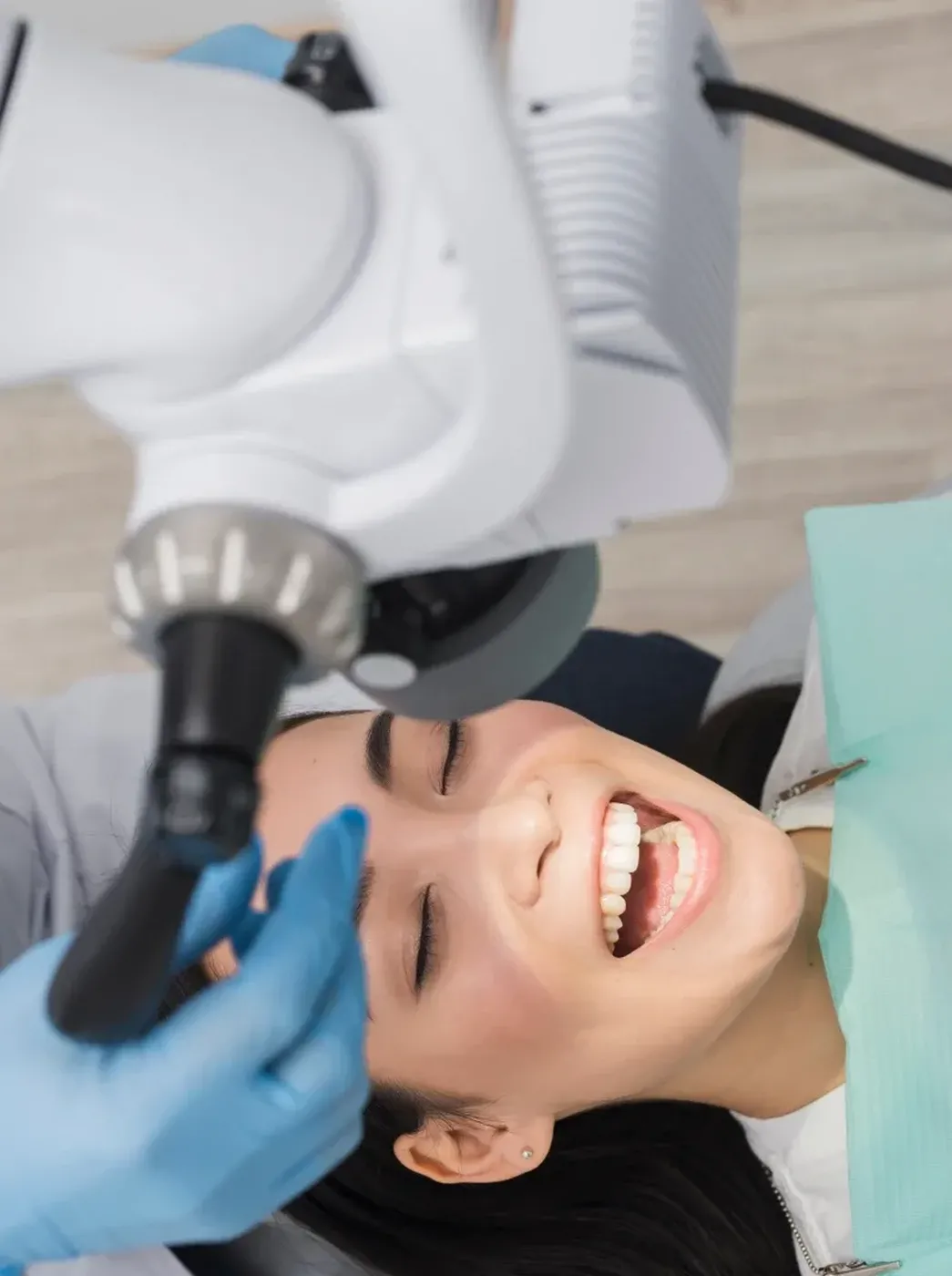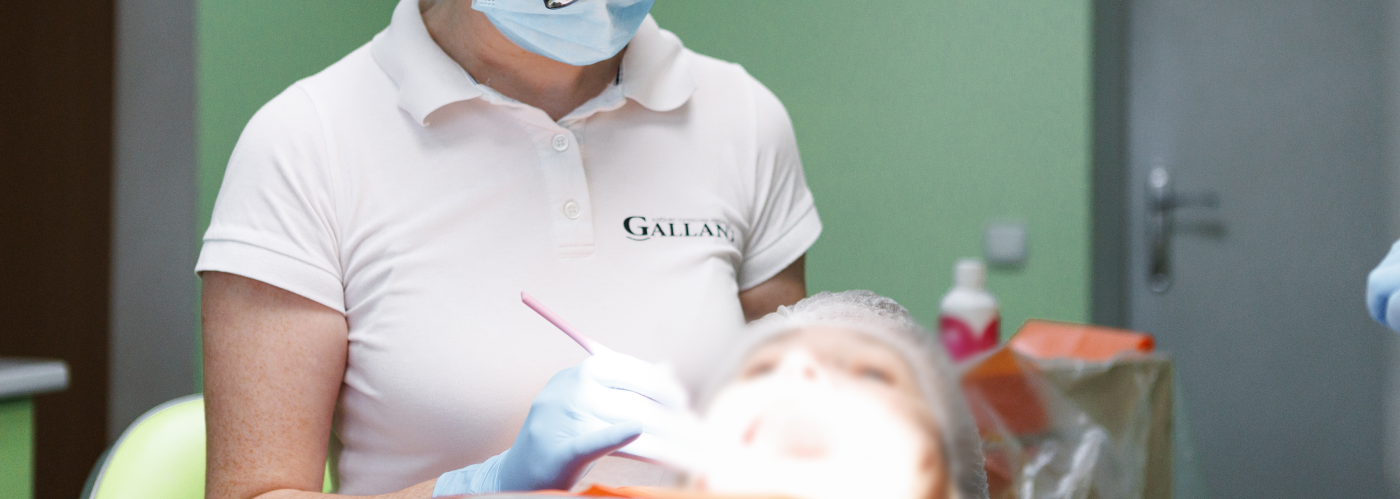
Tooth X-ray
What is a tooth X-ray?
A tooth X-ray, or periapical radiograph, is an X-ray examination that focuses on one or several teeth, allowing for a detailed image of their structure and surrounding tissues. This method is indispensable for accurate diagnosis and treatment planning.
What are the purposes of a tooth X-ray?
A tooth X-ray is used for:
- Detecting caries, pulpitis, periodontitis;
- Assessing the quality of root canal fillings;
- Monitoring the condition of the bone tissue;
- Planning implantation and orthodontic treatment.
This method allows the dentist to get a clear understanding of the tooth’s condition, enabling an informed decision about further treatment.
Advantages of this diagnostic method
A tooth X-ray has several advantages:
- High accuracy. It allows detailed examination of the tooth’s structure;
- Low radiation exposure. Modern devices ensure minimal radiation;
- Speed. The procedure takes only a few minutes;
- Painlessness. The patient does not feel discomfort during the procedure;
- Possibility of digital storage. Images can be saved and analysed on a computer.
These advantages make the tooth X-ray an important tool in modern dentistry.
Disadvantages of tooth X-rays
Despite many advantages, tooth X-rays have some limitations:
- Limited viewing area. Only one or several teeth are examined;
- Lack of three-dimensional images. It does not allow assessment of spatial relationships;
- Unsuitability for comprehensive diagnostics. If it is necessary to evaluate the entire jaw, other diagnostic methods are required.
In such cases, the dentist may recommend a panoramic X-ray or computed tomography.
What types of tooth X-rays exist?
There are several types of tooth X-rays:
Bitewing X-rays
Used to detect caries between teeth and assess the condition of fillings.
Periapical X-rays
Allow visualisation of the entire tooth from crown to root, as well as surrounding tissues.
Occlusal X-rays
Used to assess tooth development and detect bite abnormalities.
Each of these X-ray types has specific indications and is used depending on the clinical situation.
How is the tooth X-ray procedure performed?
The tooth X-ray procedure is simple and safe:
- Preparation: the patient wears a protective apron;
- Sensor placement: a special sensor or film is placed inside the mouth;
- Imaging: the device takes the X-ray, which is instantly transmitted to a computer;
- Analysis: the dentist evaluates the image and makes conclusions about the tooth’s condition.
The entire process takes only a few minutes and does not cause discomfort for the patient.
When is a tooth X-ray needed?
A tooth X-ray is recommended in the following cases:
- Suspicion of tooth decay or other tooth diseases;
- Evaluation of root canal condition before treatment;
- Monitoring the treatment progress;
- Planning implantation or orthodontic treatment.
This method provides the dentist with accurate information to make well-founded treatment decisions.
Contraindications for tooth X-rays
Although tooth X-rays are safe, there are some contraindications:
- Pregnancy, especially in the first trimester;
- Childhood: used with caution and only when indicated.
In such cases, the dentist assesses risks and decides on the advisability of taking the X-ray.
Why choose Gallant Clinic?
At Gallant Clinic, we use modern equipment for tooth X-rays. Our advantages include:
- High-quality images with minimal radiation exposure;
- Experienced specialists guarantee accurate diagnosis and effective treatment;
- The procedure is fast and painless.
We care about your health and comfort, providing a high level of service.
Request a call
We will contact you to schedule a convenient time for your consultation and connect you with the right specialist
How many times can dental X-rays be performed?
It is recommended to undergo dental X-ray examinations no more than 7 times per year, although the frequency of the procedure depends on the technology used, the nature of existing conditions, and other factors. Knowing how often dental X-rays can be taken, dentists usually take this information into account when planning diagnostics.

What is a tooth X-ray?
A periapical dental X-ray is a procedure that allows the dentist to obtain an image of one or several adjacent teeth. The procedure is performed using a digital radiovisiograph.

In which cases is a tooth X-ray performed?
- Diagnosis of cavities and their complications
- Assessment of the condition of root canals
- Detection of inflammatory processes in the tissues surrounding the tooth
- Fractures and other dental injuries
- Preparation for endodontic treatment (root canal therapy)
- Monitoring the progress and results of dental treatment

How accurate is the diagnosis from a tooth X-ray?
Modern X-ray equipment provides high-quality images, allowing for accurate assessment of the condition of the teeth and surrounding tissues.

Testimonials
I would like to thank the medical staff of the Gallant dental clinic for their high level of professionalism and for the quality and painless treatment. I’m very satisfied with the results! Every time I seek help here, I’m confident that the treatment will be carried out at the highest level, with modern diagnostics and equipment. My husband and I chose Gallant almost six years ago, and we’ve never regretted it! Highly recommended!


Request a call
We will contact you to schedule a convenient time for your consultation and connect you with the right specialist

Request a call
We’ll get back to you shortly!

Leave a Review
Your feedback means a lot to us!


